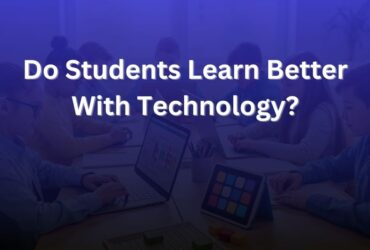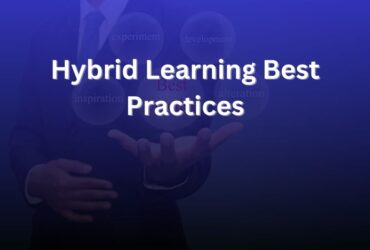Online learning has transformed education by introducing flexibility and accessibility. It enables learners to access course materials from anywhere with internet connectivity.
Education has witnessed a monumental shift with the rise of online learning platforms. The digital revolution has brought knowledge to people’s fingertips, making learning possible for those who cannot attend traditional classrooms due to geographical or time constraints. The convenience of studying at one’s own pace has encouraged lifelong learning and upskilling among a wider audience.
The integration of multimedia content has also enriched educational experiences, catering to diverse learning styles and preferences. The exponential growth of e-learning tools and resources has democratized education, creating pathways for personalized learning and virtual collaboration. As online platforms continue to evolve, they redefine the possibilities within the educational landscape, promoting a more inclusive and innovative approach to learning for students worldwide.

Credit: www.weforum.org
The Dawn Of Digital Education
Online learning has revolutionized the traditional classroom. It is transforming how we access education. This shift marks the dawn of a new era in learning.
From Classroom To Cloud
Physical boundaries no longer confine learning. Digital platforms have made education accessible anytime and anywhere.
- Flexibility to learn at your own pace
- Access to a vast array of online resources
- Connect with peers across the globe
The Tech Behind The Transition
Innovations in technology fuel this educational shift. Let’s explore the key elements responsible for the transition from traditional to digital education.
| Technology | Role in Education |
|---|---|
| Learning Management Systems (LMS) | Platforms to create, deliver, and track courses |
| Virtual Classrooms | Replicate live class experiences online |
| Educational Apps | Personalized learning tools at your fingertips |
| Cloud Computing | Store and access data remotely |

Credit: www.amazon.com
Rising Trends In E-learning
Online education has transformed how we learn and grow. Now, the focus is on exploring trends that shape this new world of education. Here are some eminent trends in e-learning:
Moocs And Mass Instruction
This trend is about learning on a grand scale. MOOCs, or Massive Open Online Courses, are making quality education accessible to all. Learners from anywhere in the world can enroll. Often led by recognized experts, these courses provide insightful content. MOOCs democratize education by breaking down barriers like location and finances.
Gamification In Learning
Gamification uses gaming principles in educational contexts. It is a potent method to make learning interactive and fun. By harnessing our love for games, it cultivates engagement and improves retention. Points, levels, and achievements motivate learners to pursue educational goals with more enthusiasm.
Self-paced Programs Prosper
In self-paced programs, learners have control. They can choose the time, place, and speed of their learning process. This trend respects individual learning styles and needs. It fosters a learner-centric environment, favoring the absorption and application of knowledge.
Overall, these dynamic trends contribute to an exciting future for online learning. They inspire new ways of thinking and learning, encouraging learners to be active participants in their education journey.
Impact On Accessibility And Inclusivity
The digital era has significantly transformed education. Online learning opens doors for students worldwide. It makes classes available to everyone. This change brings accessibility and inclusivity to the forefront of education.
Breaking Geographical Barriers
- Students learn from anywhere.
- No need to move to big cities for good schools.
- Internet access equals learning opportunities.
Previously, location dictated educational opportunities. Now, with online learning, remote areas gain the same access as urban ones. A student in a rural village can learn from top universities without leaving home. This marks a significant leap in education equality.
Education For All
- Diverse learning needs are met.
- Resources available for different abilities.
- Flexible schedules cater to everyone.
Online learning means customizing education. Disabilities no longer hinder access. Courses now come with closed captions, sign language, and screen readers. Time barriers also disappear. People work, care for families, and study on their terms. Education truly becomes for all.
Challenges And Critiques
While online learning brings many opportunities, it also faces challenges and critiques. Let’s discuss some key issues.
The Digital Divide
Access to technology makes a big difference in online education. Not all students may have this. Students need computers and the internet to learn online. A lack of these can lead to unfair disadvantages. Schools and governments need to work together. The goal? Ensure all students can learn online.
Quality Of Education Debate
The shift to online learning has sparked a debate. Is the quality the same as in-person classes? Some argue it’s not. Others say it depends. Interactive platforms can help. Teachers’ tech skills matter too. We must focus on quality content and effective teaching methods.
- Hands-on subjects challenge online learning.
- Student engagement is sometimes lower online.
- Assessments face issues of integrity and fairness.
Online learning is not perfect. It has potential but needs constant improvement. Together, we can tackle these challenges. We aim to make education better for everyone.
Success Stories
We want to share stories of victory with you now. Let’s dive into success stories of online learning that have truly transformed education. We will focus on two main areas: Case Studies of Transformation and Personal Triumphs through Technology.
Case Studies Of Transformation
First, let’s examine some case studies. These stories tell the tale of how online learning became a game-changer.
- The rural pupil: In a farm village, school was miles away. Access to a tablet and online courses offered a big change. This pupil could now learn from home.
- The full-time worker: Juggling work and school was tough. Online night classes provided the solution. She earned her degree amidst her hectic work schedule!
- The language learner: He desired to learn French. But, no local classes were available. Subscribing to an online language platform unlocked new doors for him.
Personal Triumphs Through Technology
Next, we look at personal triumphs enabled by tech.
- The visually impaired student: Regular text books were a challenge. Audiobooks and online lectures, though, were a godsend!
- The army officer: Frequent relocations made attending college tough. With online education, he could move and learn at his own pace.
- The budding author: She always wished to write a novel. An online writing course helped her pen her first book at 14!
There we have it: Examples of true personal victory through online learning. This is how the power of the internet is shaping education today.
The Future Of Learning
The Future of Learning stands at an exciting juncture. Technology reshapes how we think about education. The anticipation of what comes next fuels discussions and innovation. Classrooms of tomorrow may seem like scenes from sci-fi films, yet they are closer to reality than we might think.
Predicting Technological Advancements
Continuous innovation defines the realm of online learning. Emerging technologies promise to enhance accessibility and engagement. Here’s a peek at what could unfold:
- Virtual Reality (VR): Immersive learning experiences that simulate real-world environments.
- Artificial Intelligence (AI): Adaptive learning platforms that tailor content to individual student needs.
- Blockchain: Secure, transparent record-keeping for academic credentials.
- 5G Networks: Faster connectivity to support high-bandwidth educational tools and resources.
Blended Learning Models
Blended learning combines traditional classroom experiences with online education. It creates a dynamic educational environment. Here’s what the blend offers:
| Blended Learning Feature | Benefit |
|---|---|
| Personalized Pace | Students learn at their own speed. |
| Flexible Schedules | Learning fits around students’ lives. |
| Varied Resources | Diverse material caters to different styles. |
| Interactive Platforms | Engagement through forums and quizzes |
Policy And Infrastructure Needs
Support from policies and infrastructure is crucial. They ensure the success of future learning strategies. Considerations include:
- Investing in digital tools for schools and educators.
- Training teachers to use cutting-edge technology effectively.
- Creating policies that protect student data privacy.
- Ensuring universal access to bridge the digital divide.
Modern education demands more than just digital transformation. It requires comprehensive strategies that address technology, learning models, and the necessary framework to support them. As these elements converge, the future of learning shines bright, promising an education that’s not only more innovative but also more inclusive.
Frequently Asked Questions Of How Has Online Learning Changed Education
What Has Online Learning Done for Education?
Online learning offers 24/7 accessibility, diverse multimedia content, global collaboration, and flexible schedules. It improves retention and is cost-effective and environmentally friendly.
What Impact Has Online Education Had on Students?
Online education enhances flexibility, personalized learning, and access to global resources. It fosters self-directed learning, digital literacy, and engagement in a tech-driven world.
What Role Has the Internet Played in Education?
The Internet has transformed education by providing immediate access to resources, enabling online learning, and promoting global collaboration. It has reshaped teaching methods and opportunities.
What Effect Did Online Learning Have on Students?
Online learning provided flexibility and saved commute time, but posed challenges with technology and social interaction. Some students thrived, while others faced struggles with discipline and isolation.
What Are The Benefits of Online Learning for Students?
Online learning offers convenience, flexible scheduling, and personalized learning paths. It also provides access to a wide range of resources and fosters independent learning.
Conclusion
How Has Online Learning Changed Education? It has revolutionized the learning experience by providing flexibility, interactivity, and global accessibility. This digital shift has opened doors for personalized study, collaborative learning, and improved student outcomes. As more educational institutions embrace online platforms, the potential for innovation in teaching and learning continues to grow. The future of education is undoubtedly tied to the advancement of online learning, enabling more efficient and inclusive knowledge sharing for generations to come. By adapting to these changes, we create a more accessible, diverse, and effective educational environment.












































Leave a Reply